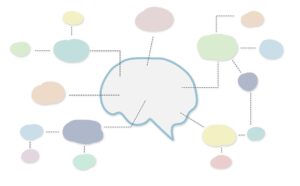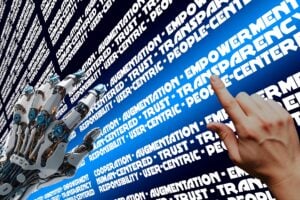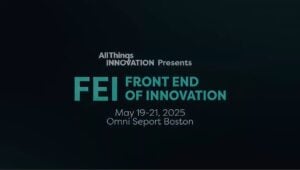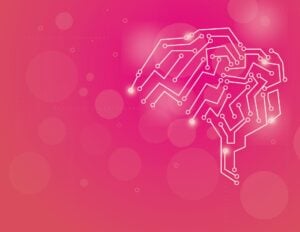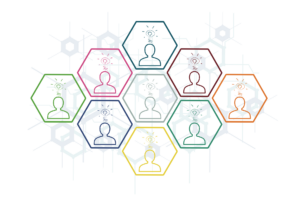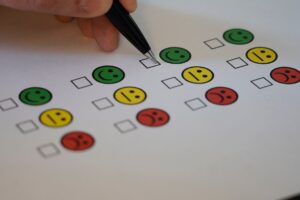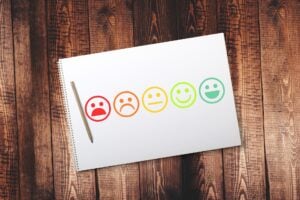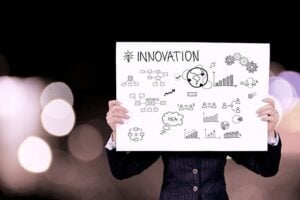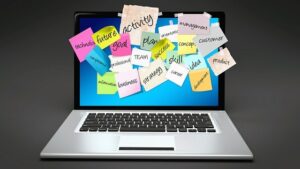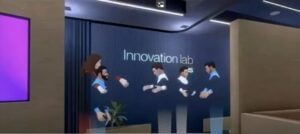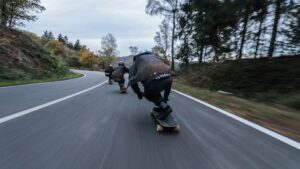During FEI, Sanchez participated in the keynote panel, “Actioning The Rogue Mindset: Aligning Innovation with Business Strategy.” She also held the session, “Delivering on R&D Strategy,” which examined how to craft and execute a winning R&D strategy, touching on topics like strategic alignment, organizational buy-in, cross-functional collaboration, future proofing and more.
Managing Innovation in an R&D Setting
One of the themes of this conference has been about aligning innovation with business strategy. Your session touched on this in the context of the impact of research and development.
Sanchez relates, “We had the opportunity to talk about how you manage an innovation portfolio in an R&D setting when you’re looking far out into the future. It is imperative for business strategies to drive growth and to derive profitable growth into the future, and this kind of activity brings a high level of value into those portfolios.”
Innovation has always dealt with uncertainty. How can you manage that?
“Uncertainty is a big deal for the innovation executive,” agrees Sanchez. “Most of the time when we’re working close in, we’re working on managing risk and de-risking propositions, but when you’re working far out on the front end of innovation, you’re really managing uncertainty, and it takes a whole new set of rules to be able to do that.”
Innovation certainly can thrive on that uncertainty. Just how can the innovation professional make an impact in their role?
“It’s important to allocate resources to these spaces to be able to create a sustainable future for your innovation portfolio,” she says. “And although the majority of our resources, 70 to 80% are dedicated to things that are closer in and well understood, about 20 to 30% of the resources have to be protected and kept in that future space that allows you to create, to learn, and to really plot a path towards that profitable growth. We do that by ring fencing the resources. We make sure that we devote that effort in that space because otherwise, the problem solved today will consume all of the resources you have with other people or money or time or access to what you need to run your experiments.”
“You really have to be future looking for that innovation journey. In order to have a balanced portfolio over time, to create the opportunities for the future, you have to start early enough to have time to complete the development, and that’s what FEI is all about,” says Sanchez.
Key Takeaways from FEI25
Speaking of FEI, we featured the rogue mindset round tables and keynote panel presentation yesterday. It’s an interesting framework as part of the innovation mindset.
Sanchez notes, “It was a fantastic way to start the day. What we were able to do was to set ourselves up to broaden our thinking, to broaden our expectations, to think a little bit outside of the box, and go learn in those spaces in a way that you can bring your knowledge and your tools back into your box where you operate—and end up doing a broader set of work, changing the rules a little bit, and, helping your business, your company, your effort actually think bigger and broader.”
Looking ahead, today FEI is grouped around AI themes and this concept of collective intelligence. What does collective intelligence mean to you and your organization?
“One of the big themes of the first day was about the culture,” observes Sanchez. “The culture you have to create, the learning environment, what does it need to look like in order for you to be able to thrive in this creation of innovation. Today, collective intelligence is about augmenting the toolbox that you have and getting the culture ready for the future. It’s like AI can be a blessing, a set of tools that help you actually learn better, more productively, faster, to be able to sort through larger sets of data and so on. But on the flip side of that, there’s a lot of apprehension about what does it really mean, what will it do to the people that are working in these spaces. But as long as we incorporate it as a tool into our portfolio, it would just help us do our work better.”
Better, faster, more accelerated, deeper insights?
“A little bit of both,” she says. “There’s definitely an efficiency gain by being able to look systematically at more data with broader access to things that otherwise will take too much effort or too much time. But it’s also about creating the right learning environments for that tool that you’re using or those models, to teach themselves around the right sets of primary data that will allow you to get real information and not hallucinations as you repeat and repeat the experiments.
Certainly, human judgment is still very important.
“Humans are going to be super important in this journey all along,” says Sanchez. “It’s like how you create personas, how you write prompts, what context do you use, all of that will inform how those AI models will work, and all of that comes from your human knowledge.”
“Today’s innovators are thinking already about tomorrow’s skills, which are here for us now. If you go back five years, it would have been a digitization journey. If you go before that, it will be a computer enhancement journey. We’ve been in this technology evolution journey for a long time, and AI will be one of those that is here with us to stay.”
Contributor
-

Matthew Kramer is the Digital Editor for All Things Insights & All Things Innovation. He has over 20 years of experience working in publishing and media companies, on a variety of business-to-business publications, websites and trade shows.
View all posts















